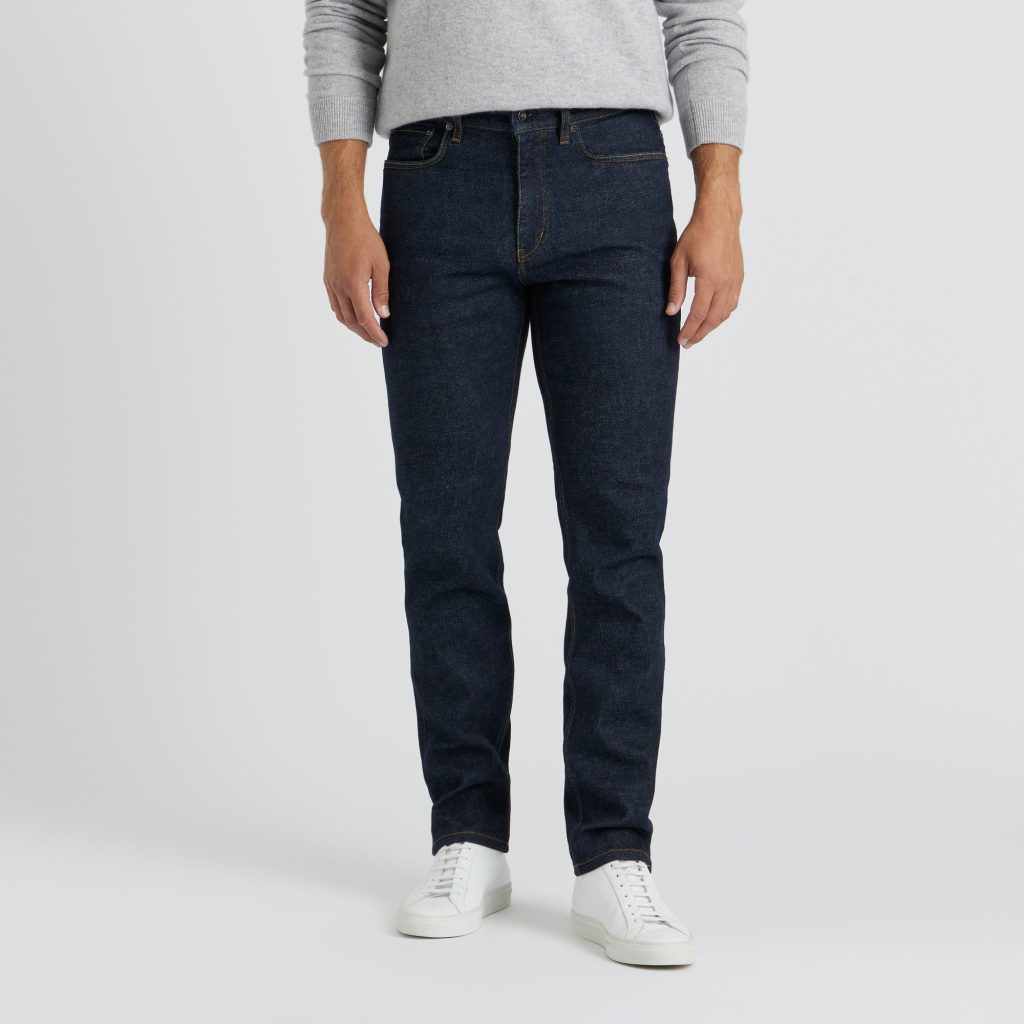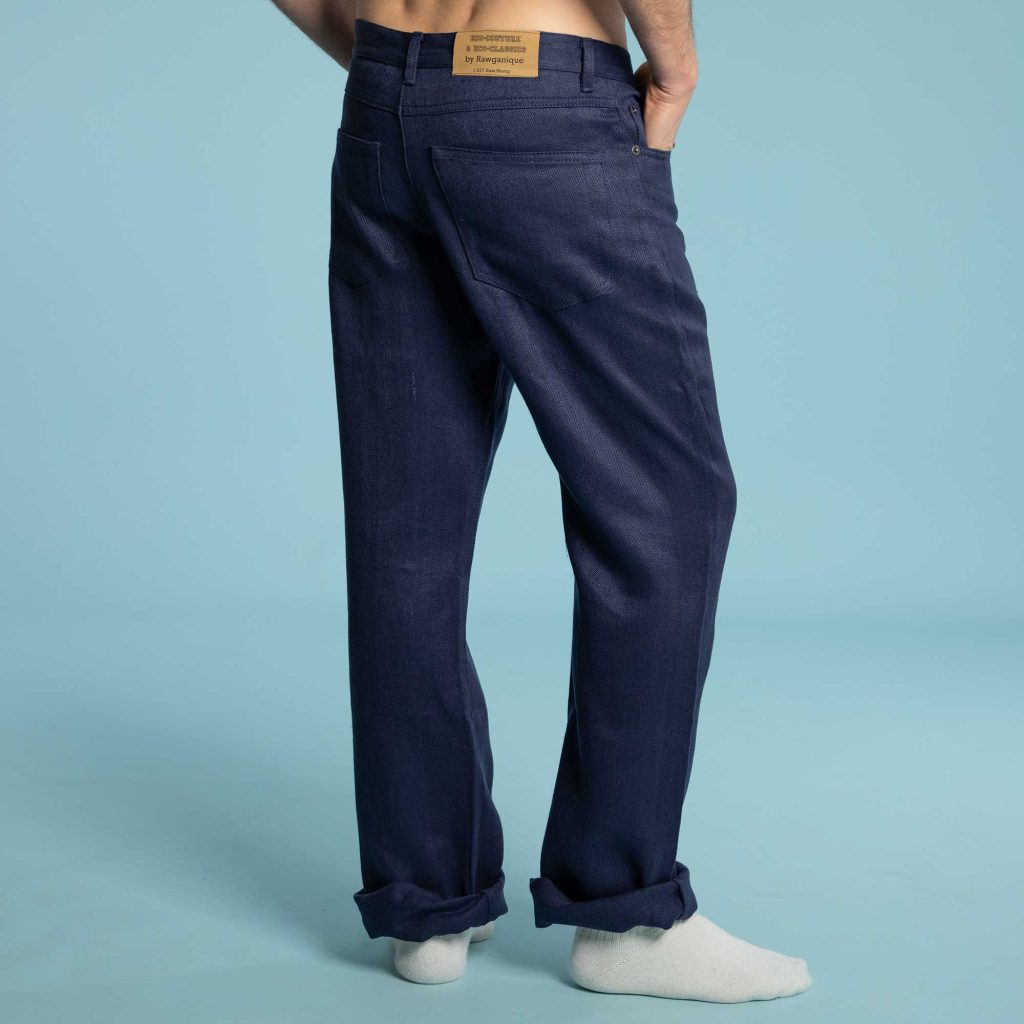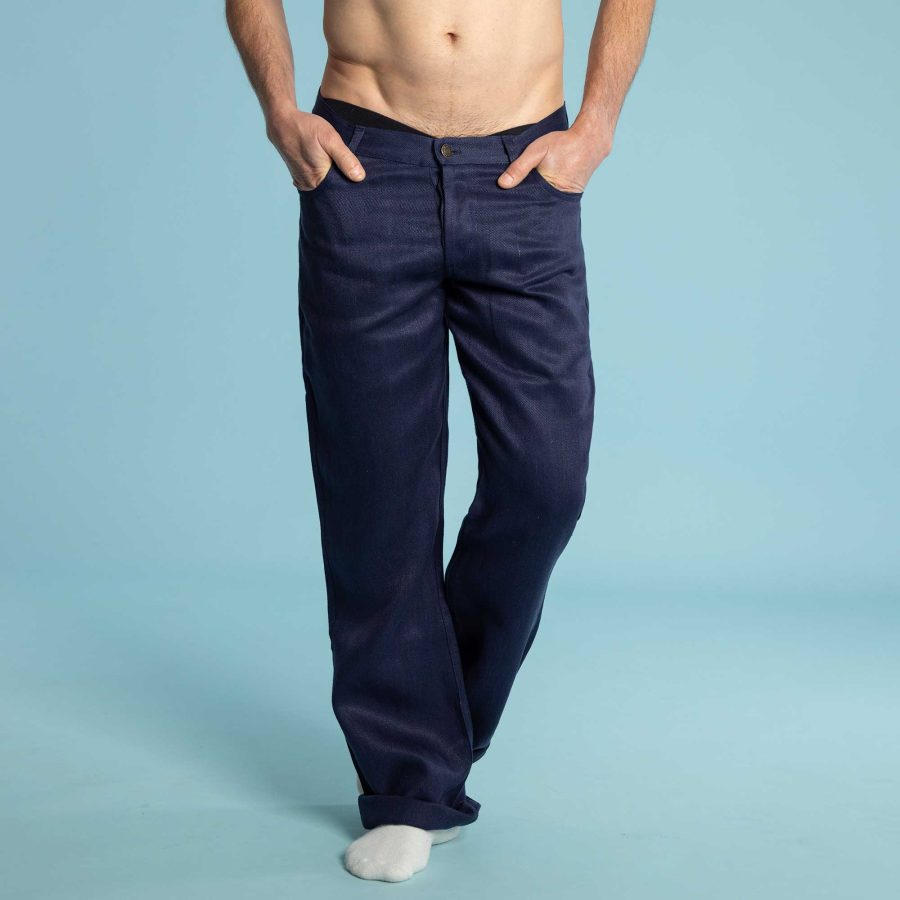Introduction
As the fashion industry becomes increasingly aware of its environmental impact, the demand for sustainable clothing options has surged. Among the many eco-friendly materials gaining popularity, hemp stands out as a game-changer in the quest for greener fashion. Hemp jeans, a revolutionary product in sustainable style, are making waves for their environmental benefits, durability, and unique aesthetic. This article explores the rise of hemp jeans, examining their ecological advantages, style credentials, and the future of this innovative fabric in the world of fashion.
The Environmental Impact of Traditional Denim
To appreciate the benefits of hemp jeans, it’s crucial to understand the environmental toll of traditional denim production. Conventional denim manufacturing is notorious for its heavy use of water, chemicals, and energy. The process often involves:
- Water Consumption: Producing a single pair of jeans can require up to 2,000 gallons of water, primarily for dyeing and finishing processes.
- Chemical Usage: The use of toxic chemicals in dyeing and treating denim can lead to environmental contamination and health risks for workers.
- Energy Use: The high energy demand for cotton cultivation and denim production contributes significantly to carbon emissions.
The quest for sustainable alternatives is driven by these concerns, and hemp jeans offer a promising solution.
Why Hemp? The Benefits of Hemp Fabric
Hemp, a versatile and sustainable plant, has been used for centuries in various applications. Recent innovations have revived its role in fashion, particularly in the production of hemp jeans. Here’s why hemp is making a strong case for eco-friendly fashion:
- Low Water Usage: Hemp cultivation requires significantly less water compared to conventional cotton. It is a drought-resistant plant that thrives in a variety of soil conditions, making it an environmentally friendly choice for fabric production.
- Reduced Chemical Input: Hemp is naturally resistant to pests and diseases, reducing the need for synthetic pesticides and herbicides. This minimizes chemical runoff into waterways and supports healthier ecosystems.
- Biodegradability: Unlike synthetic fabrics, hemp fibers are biodegradable. Hemp jeans will naturally decompose at the end of their life cycle, reducing waste and contributing to a circular fashion economy.
- Durability: Hemp fibers are known for their strength and longevity. Hemp jeans are not only long-lasting but also develop a unique patina over time, adding character and ensuring that they age gracefully.
- Carbon Sequestration: Hemp plants absorb a substantial amount of carbon dioxide during their growth, contributing to a reduction in greenhouse gases. This makes hemp farming an effective method for offsetting carbon emissions.
The Style of Hemp Jeans
While the environmental benefits are compelling, style is also a critical factor in the success of hemp jeans. Modern hemp jeans combine sustainability with contemporary fashion, offering a range of designs to suit various tastes:
- Classic Cuts: From straight-leg to skinny fits, hemp jeans are available in traditional styles that seamlessly integrate into existing wardrobes.
- Unique Textures: Hemp fabric has a distinct texture that can vary from soft and smooth to rugged and textured. This uniqueness adds a touch of individuality to each pair of jeans.
- Innovative Designs: Designers are experimenting with hemp blends and dyes to create innovative patterns and colors, ensuring that hemp jeans are not only eco-friendly but also fashionable.
 Challenges and Future Prospects
Challenges and Future Prospects
Despite their many advantages, hemp jeans face some challenges in gaining mainstream acceptance:
- Perception: There is a lingering perception that hemp fabric is coarse and unrefined. However, advancements in textile technology are addressing this issue, producing softer and more versatile hemp fabrics.
- Cost: Currently, hemp jeans can be more expensive than conventional denim due to the higher cost of production and limited availability. As demand grows and production scales up, prices are expected to become more competitive.
Looking ahead, the future of hemp jeans appears promising. As more consumers become aware of the environmental impact of their fashion choices, the demand for sustainable options like hemp jeans is likely to increase. Innovations in hemp fabric technology and growing support from the fashion industry are expected to drive further advancements and make hemp jeans a mainstream staple.
The Journey Begins: Hemp Cultivation
The journey of hemp jeans starts with hemp cultivation, which offers numerous environmental benefits over traditional cotton farming. Hemp, a member of the Cannabis sativa family, is a versatile and hardy plant that has been used for centuries in various applications, from textiles to construction materials. Modern hemp cultivation emphasizes its eco-friendly attributes:
- Minimal Water Requirements: Unlike cotton, which is notoriously water-intensive, hemp requires significantly less water to grow. An acre of hemp needs only around 600 gallons of water compared to the 2,000 gallons required for cotton. This reduced water footprint helps conserve vital water resources, especially in regions experiencing drought.
- Reduced Chemical Inputs: Hemp is naturally resistant to pests and diseases, which means that farmers can avoid or significantly reduce the use of synthetic pesticides and herbicides. This not only lessens environmental pollution but also supports healthier soil and water systems.
- Soil Health and Carbon Sequestration: Hemp plants contribute positively to soil health through their deep root systems, which prevent soil erosion and improve soil structure. Additionally, hemp is known for its carbon sequestration capabilities. It absorbs a substantial amount of CO2 during its growth cycle, helping to offset greenhouse gas emissions.
- Short Growing Cycle: Hemp grows quickly, typically reaching maturity in 70 to 90 days. This short growing period allows for multiple harvests in a year and reduces the overall environmental impact of land use.
From Field to Fabric: The Processing of Hemp
Once harvested, hemp undergoes a series of processes to transform it into usable fabric for jeans. The processing of hemp fibers has advanced significantly, addressing previous concerns about texture and usability:
- Retting and Decortication: The first step involves retting, a process where harvested hemp stalks are left to decompose slightly, making it easier to separate the fibers from the woody core. After retting, the stalks are subjected to decortication, which involves removing the outer layer to extract the long, strong fibers.
- Fiber Processing: The extracted hemp fibers are then processed into yarn. Advances in textile technology have enabled the production of softer, finer hemp yarns that can be blended with other fibers like organic cotton or recycled polyester to enhance comfort and versatility.
- Dyeing and Finishing: Hemp fibers are dyed using less harmful chemicals compared to conventional dyeing processes. Many brands use natural dyes or low-impact dyes, further reducing the environmental footprint of the final product. Finishing techniques have also evolved, allowing for a range of textures and finishes that mimic traditional denim.
 Designing the Future: Hemp Jeans in Fashion
Designing the Future: Hemp Jeans in Fashion
With the raw material processed, the next step is the design and production of hemp jeans. Hemp jeans offer a unique blend of sustainability and style, making them a compelling choice for eco-conscious consumers:
- Design Versatility: Hemp jeans come in a variety of cuts and styles, from classic straight-leg and skinny fits to more contemporary designs. The natural texture of hemp fabric adds a distinct aesthetic, with a rugged yet refined look that sets it apart from conventional denim.
- Durability and Longevity: Hemp fibers are renowned for their durability and strength. Hemp jeans are less likely to tear or wear out compared to traditional cotton jeans, resulting in a longer-lasting garment. This durability not only extends the life of the jeans but also reduces the frequency of replacements, contributing to a more sustainable wardrobe.
- Aging Gracefully: Hemp jeans develop a unique patina over time, enhancing their character as they age. This natural aging process is often seen as a desirable trait, adding individuality to each pair and encouraging a more mindful approach to clothing consumption.
- Blending with Other Materials: Many hemp jeans incorporate blends with other sustainable materials, such as organic cotton, recycled polyester, or even Tencel. These blends can enhance the comfort, stretch, and overall wearability of the jeans while maintaining their eco-friendly credentials.
Consumer Adoption and Market Trends
The rise of hemp jeans reflects a broader trend toward sustainable fashion, driven by increasing consumer awareness and demand for eco-friendly products. As sustainability becomes a key consideration for shoppers, hemp jeans are gaining traction in the fashion industry:
- Growing Consumer Interest: As consumers become more environmentally conscious, they are seeking out products that align with their values. Hemp jeans, with their clear sustainability benefits, appeal to a growing market of eco-conscious individuals who want to make responsible fashion choices.
- Innovative Brands and Designers: A number of innovative brands and designers are leading the charge in promoting hemp jeans. These companies are not only offering stylish and sustainable products but also educating consumers about the benefits of hemp and encouraging more widespread adoption.
- Challenges and Opportunities: Despite their advantages, hemp jeans face challenges in terms of cost and perception. The higher cost of production and limited availability can make hemp jeans more expensive than traditional denim.
- Future Prospects: The future of hemp jeans looks promising as the fashion industry continues to evolve towards greater sustainability. Ongoing research and development in hemp fabric technology, combined with increasing consumer demand, are likely to drive further innovations and expand the market for hemp-based apparel.
Conclusion
The rise of hemp jean represents a significant step forward in the quest for sustainable fashion. By offering a blend of environmental benefits, durability, and style, hemp jeans provide a compelling alternative to traditional denim. Embracing hemp jean is not just a choice for the environment but a statement of commitment to a more responsible and fashionable world.
